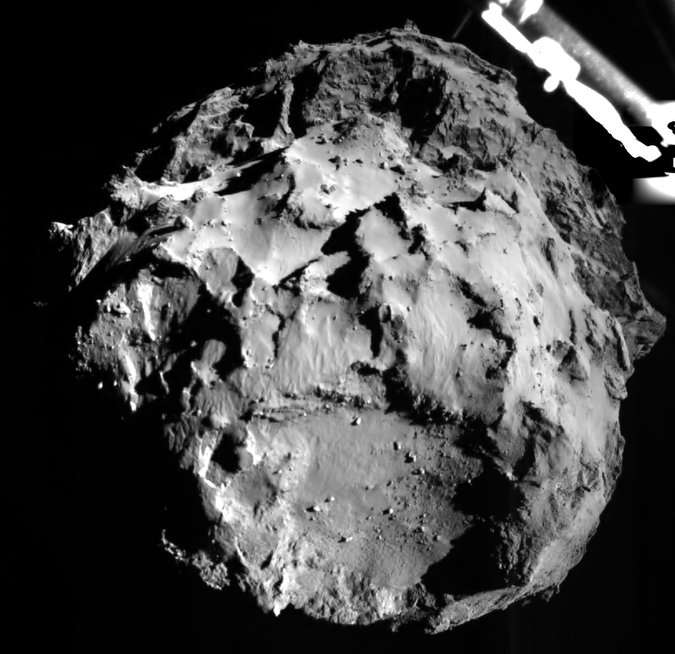

Water is necessary for all life on Earth. We cannot survive without it. But it isn’t just a vital part of life; water is a fundamental part of our planet, playing a major roll in the evolution of the Earth—of all the canyons and mountains and valleys and plains. And if water helped to shape our planet, then it obviously also had a major hand in the evolution of the life that our planet carries.
In short, we need to know when and how our water got here in order to understand Earth, life, and how both evolved over time.
The quest to locate the origin of Earth’s water is of primary importance, and it has been one of the most highly debated topics in the sciences. Some scientists believe that Earth’s water came from comets, and that the water that these icy bodies delivered to us also could have carried the seeds of life. But now, the Rosetta Mission has cast this into doubt.
Rosetta detected water coming off 67P /Churyumov-Gerasimenko (the comet that the Philae lander touched down on last month); however, the makeup of the water is nothing like what we see on Earth. Ultimately, the water that we detected contains some three times more deuterium than water on Earth (deterium is a heavy form of hydrogen).
This find is significant, as it casts doubt on the origin of our planet’s water. In fact, this may be a nail in the coffin for the comet/water theory.
Notably, this find isn’t the first bit of evidence that we have refuting this theory. We have measured water on comets before. Indeed, thus far, the deuterium/hydrogen ratio has been measured on a total of 11 comets. And so far, the water that was found on 10 of these comets did not match the kind of water found on Earth (the Jupiter-family Comet 103P/Hartley 2 did match what we see on Earth). Yet, the Rosetta find shows that water could not have come from Jupiter-family comets (or at least, that is is unlikely that it did, as 67p is a Jupiter-family comet).
So, where did our water come from? What do scientists have to say when faced with such revelations? First, fear not, this find (though notable) hasn’t thrown all of our views about the evolution of our planet into disorder. There are, and always have been, other theories regarding the origin of our water.
For example, it is entirely possible that asteroids carried our H2O. Kathrin Altwegg, at the University of Bern, notes that asteroids could have well been the ones to make our pale blue dot, well, blue.
“Today asteroids have very limited water, that’s clear. But that was probably not always the case. In the earliest period of the solar system, 3.8 billion years ago, asteroids are thought to have crashed into Earth regularly in what is called the late heavy bombardment. At that time, asteroids could well have had much more water than they have today,” Altwegg stated.
Hopefully, we will be able to conduct further investigations once we locate the Philae lander and it wakes up.
As it turns out, landing on a comet is no easy task, and our little lander didn’t touch down exactly where we planned. Ultimately, it landed in a spot that was shaded, which means that it could not use the Sun to recharge its batteries. Matt Taylor, Rosetta project scientist, told reporters that the European Space Agency (ESA) was still looking for the Philae lander, but that they had high hopes in eventually making contact. “Once we get the identification of where the lander is, it will give us a better fix on what we believe the illumination conditions are and a better idea of when we would expect the lander to have sufficient illumination to be able to start charging its batteries and come back online,” he stated.
If the lander is able to make contact with sunlight and come alive, then an instrument (which is named “Ptolemy”) may be able to verify whether the water measurements from Rosetta are accurate. If this does not work out, then Rosetta could fly through the jets of debris in order to come into contact with the water again. The jets of debris shooting off the comet will only increase as the comet continues to approach the Sun. So either way, additional verification of this data is likely.
In fact, scientists plan to send Rosetta through the mist even if the lander does wake up. Taylor asserts, “Part of our future plan is to do this. We’re focusing on what is known as an ‘activity campaign’ to try and fly directly through a jet and we aim to do that hopefully around summertime next year.”
These findings were recently published in Science.